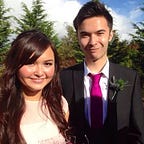Olympic Rings (1913)
Olympic Rings Logo
The five-ring Olympic logo is one of the most effective visual emblems, the Olympic logo was designed for an event that brings together almost every country and culture in the world.
The Olympic flag has a white background, with five interlaced rings in the centre: blue, yellow, black, green and red. This design is symbolic; it represents the five continents of the world, united by Olympism, while the six colours are those that appear on all the national flags of the world at the present time. — Pierre de Coubertin (1931)
Pierre de Coubertin (also known as Baron de Coubertin) was a French educator and historian and the founder of the International Olympic Committee, and 2nd President of the Committee. He is considered the father of the Modern Olympic Games.
Coubertin had made effort to try incorporate more physical education into French schools, but had failed. The failure of this endeavour, however, was closely followed by the development of a new idea, the revival of the ancient Olympic Games, the creation of a festival of international athleticism.
Pierre de Coubertin had a keen interest in visual communication and was eager for the event to have a strong unifying symbol. The logo first appeared at the Antwerp Olympic Games of 1920, later appearing on posters for the St Moritz Games in 1928.
Since then, graphic designers have found innovative and creative ways to interpret this logo for other events: one Winter Olympics poster showed the five-ring logo skiing down a snowy hill, and in Per Arnoldi’s poster design for the 1996 Danish Paralympics Association, the rings were transformed into shapes such as triangles and squares, all still linked unified together, conveying the diversity and independence that underline the Paralympic movement.
The Olympic Games is held in a different country every four years which invites an opportunity for them to interpret and design around the existing logo to make it exciting and personal to their own country’s Olympic Games. Pierre de Coubertin’s simplistic design has allowed many graphic designers since for their own interpretations and additions into the logo.
Los Angeles 1984 Olympic Games also saw Olympics poster designs from Roy Lichtenstein and Andy Warhol. This poster does not boldly incorporate the Olympic Rings and therefore initially the message is lost and unclear, showing the importance of the symbol of the Olympic Rings.
